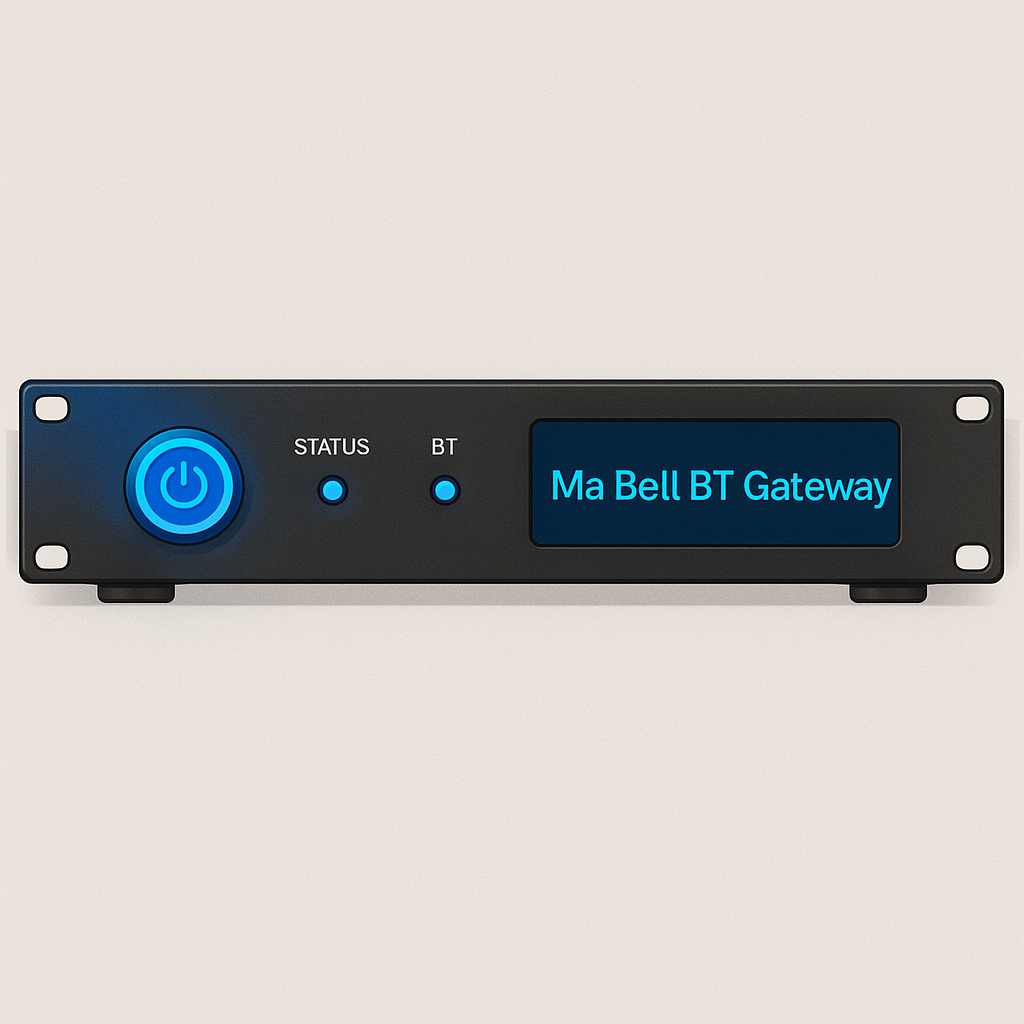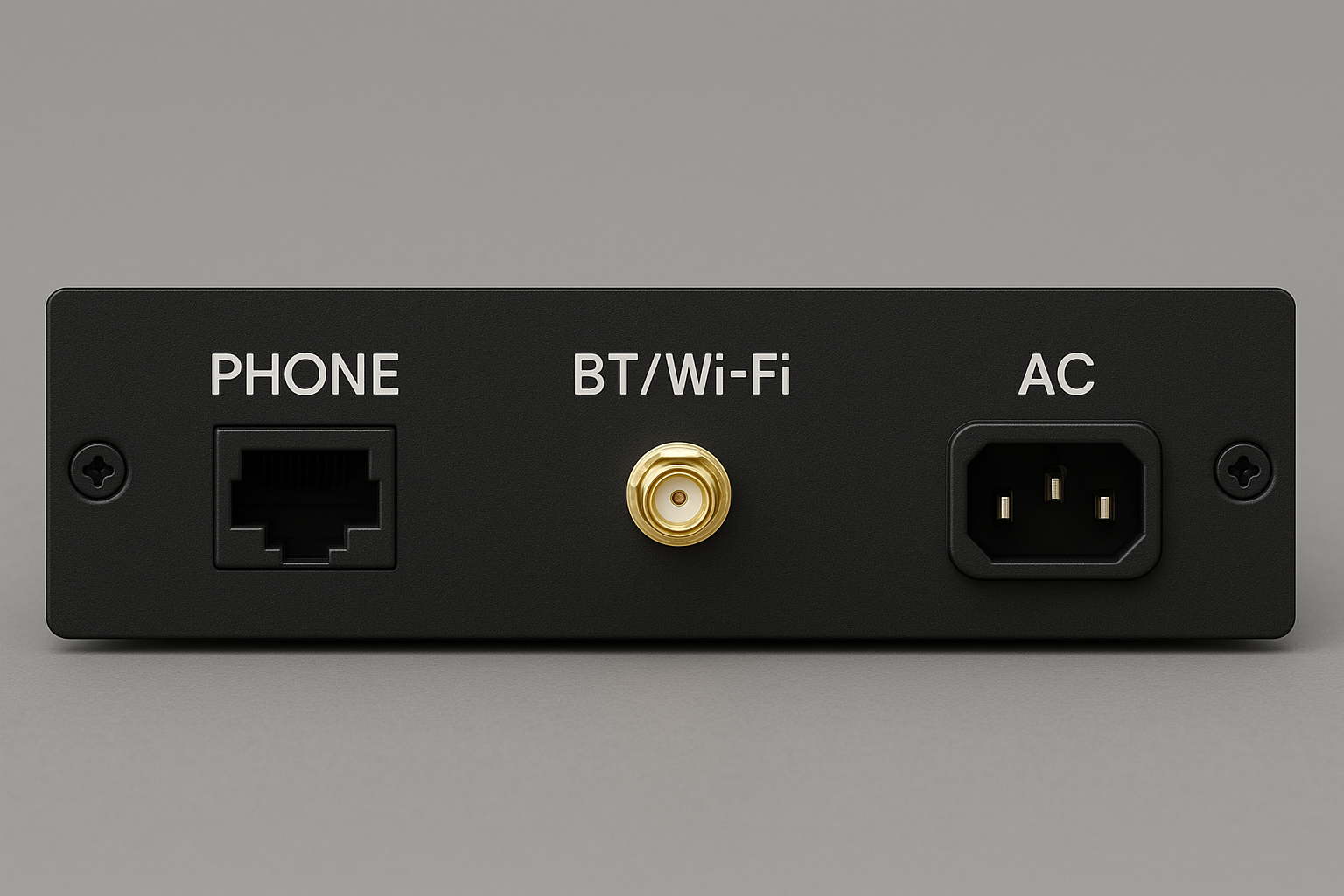Enclosure Design
The Ma Bell Bluetooth Gateway is designed to be housed in a 1U 19-inch rackmount enclosure. While the system provides support for legacy analog telephones, the internal design is built entirely with modern components. This section outlines the enclosure requirements and the design considerations for each face of the unit.
Front Panel

The front panel presents the device’s user-facing controls and status indicators. Key elements include:
Power button — momentary switch with integrated LED ring (e.g., 12V or 5V illuminated)
Status LEDs — at minimum:
STATUS (system operational)
BT (Bluetooth connection/activity)
Display — optional LCD or OLED panel (e.g., I2C 128x32) to show pairing status, call state, or diagnostics
Optional ventilation slots or mesh — depending on internal power supply heat dissipation
Rack ears — standard 19” mounting flanges with holes for rack screws
Back Panel

The rear panel must handle all external I/O and power connections. The final design includes:
PHONE
RJ45 jack wired to support analog telephone output
Center pair (Green/Red) provides Tip and Ring for loop current and audio
Outer pair (Yellow/Black) optionally carries 9V AC to power an illuminated rotary dial
Internal circuitry provides ringing voltage, tone generation, and rotary pulse decoding
BT/Wi-Fi Antenna
Single external SMA antenna connector
The ESP32-WROVER-IE uses a shared RF front-end for both Bluetooth and Wi-Fi
✅ External antenna connector – The “IE” version includes a u.FL connector for an external antenna, ensuring strong signal coverage throughout the home
AC Power Inlet
Standard IEC 60320 C14 jack for main AC input (e.g., 120V/240V)
Powers the internal AC-DC supply that drives all system voltage rails
Internally fused and optionally switchable
Internal Layout Considerations
The enclosure must accommodate and isolate:
Custom PCB(s) for power delivery, signal conditioning, and ESP32 control
Audio coupling transformers and opto-isolated circuits
AC-DC power supply unit — potentially a small enclosed module or DIN-rail PSU
Voltage step-up/step-down regulators — for bell voltage, lamp power, ESP32 logic, etc.
Cable routing paths — to keep AC and signal wires separated and reduce noise
Standoffs or brackets — for securely mounting boards and modules
Labeling and Aesthetics
For clarity and authenticity, the enclosure should include:
Silk-screened or engraved labeling for ports and indicators
Iconic “Ma Bell” or Bell System-style typography (optional)
A matte black or brushed aluminum finish for a professional appearance